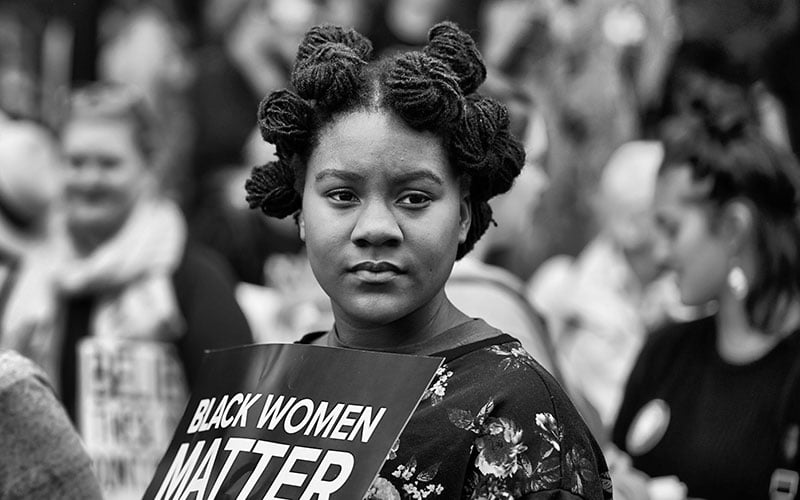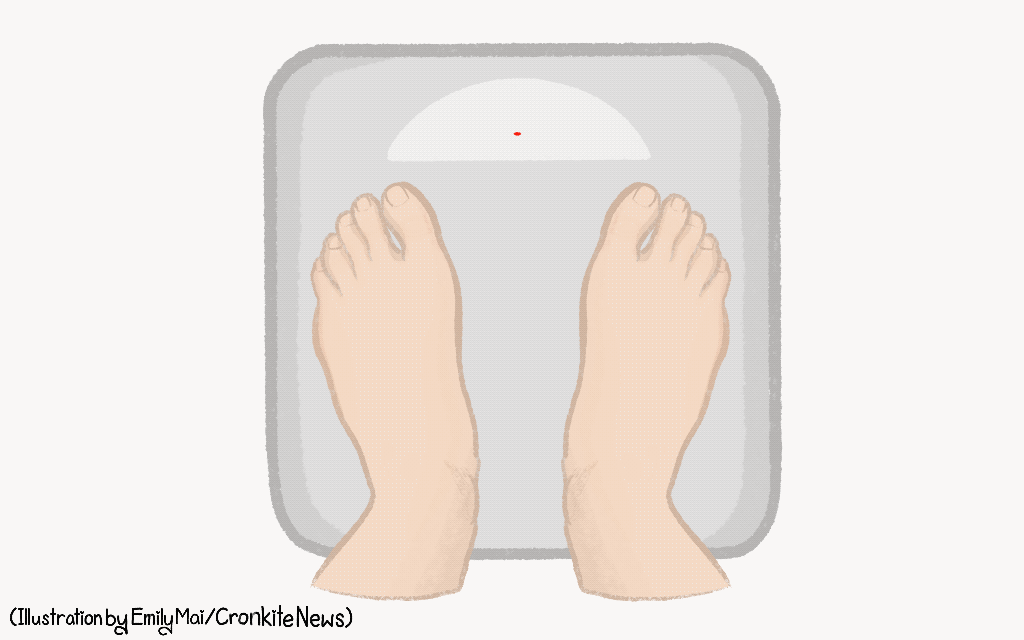PHOENIX – Chita Gastelum, an immigrant who identifies as Indigenous and Latino, remembers coming to the U.S. and growing up with the American pressure to diet.
“It’s like a culture shock,” she said. As a “curvy” woman, Gastelum found U.S. norms of “the way that you’re supposed to be accepted is completely different. I see the harm that it can cause in women, especially coming in from other countries and just trying to live the American life.”
Eating disorders are on the rise in the U.S., including among teen girls. Attention still centers on women, who are most likely to suffer from eating disorders like bulimia and anorexia. But research, diagnosis and treatment lags for men, LGBTQ individuals and Latina and Black women.
Medical experts are calling for better screening methods to better understand who gets eating disorders. According to the National Eating Disorder Association, 20 million women – and 10 million men – in the U.S. will have an eating disorder in their lifetime. Nutrition education, psychotherapy and support groups continue to be ways to treat a condition that is difficult to dislodge.
People with eating disorders might feel the need to have a limited diet, and end up putting too much focus on food or healthy eating, said Gastelum, 52, who has been in remission for two decades after being diagnosed with an eating disorder after a high-risk pregnancy.
“You don’t participate in events– you start to isolate,” said Gastelum, a former Mexico resident who lives in Tucson. “You really limit yourself to things that you withdraw from usual social activities. It also creates a lot of anxiety.”
Eating disorders don’t discriminate.
“I think the most important message is that eating disorders can affect people of all genders, all sexual orientations, all ethnicities, all races and all sizes,” said Dr. Jason Nagata, an assistant professor of pediatrics at the University of California, San Francisco. “It’s important to realize that you can’t just tell that someone has an eating disorder based on how they look. There’s a lot of diversity in eating disorders.”

Men get eating disorders that often are missed
Symptoms of eating disorders in men can often be missed or under-recognized, making it harder to properly diagnose and treat, Nagata said. “We just don’t have the equivalent formal diagnoses that capture the male experience,” he said.
One reason: Eating disorders usually focus on losing weight and being thin, arising from the societal pressure placed on women. But men’s problems with disordered eating often mean- they strive for a bigger body size to reflect society’s linking of masculinity with muscle.
Men may binge eat vast amounts of food in one sitting, go for protein while restricting carbs or fats and cram on supplements like steroids, as well as excessive or compulsive exercise, Nagata said.
“There are a subset of those who will start just living at the gym all day and obsess about their appearance,” Nagata said. “After a certain point, it becomes an obsession or preoccupation, where anytime they’re spending outside of the gym or not eating high-protein diets becomes stressful and impairs their quality of life.”
A binge-eating disorder involves a lack of control and rapidly eating large amounts of food, at least once a week for a minimum of three months.
It’s known as “muscle dysmorphia,” but can also be called “bigorexia or reverse anorexia.” The person could be of a routine size or even considered muscular, but that’s not what they see.
“Maybe they’re trying to gain muscle and bulk up, engaging in supplements or muscle-building activities to try to achieve that,” Nagata said.
Eating disorders in men also take longer to diagnose, which puts them at a higher risk of health complications or death, according to the eating disorders group.
“I think that the typical screening questions for family practice doctors or pediatricians are often focused on weight loss,” Nagata said. “They might ask about fasting or skipping meals, severe restriction of food intake, or behaviors like vomiting or taking laxatives or diuretics to lose weight.”
And eating disorders are also feminized, such as a diagnosis that associates an eating disorder with the loss of a menstrual period. Nagata said that gender-biased diagnoses have since been dropped.
But the stigma remains and can lead to men being reluctant to seek treatment.
Nagata said he thinks there needs to be more research and categories that better understand the concern of body image issues in men and boys. “Whether it’s concerns about muscularity, concerns about exercise, and really capturing that in a way that can really help identify those who are struggling,” he said.
A disorder that disproportionately affects LGBTQ people, women of color
Most of the people diagnosed with anorexia and bulimia are women – two-thirds of teenage girls across the U.S. report they are actively trying to lose weight, Nagata said. “I think that just reflects some of these pressures that exist for various social and cultural reasons.”
Related story
Gastelum said her family was not aware of her eating disorder, which she thinks may have started when she was 15. “Because of my culture, eating disorders do not exist,” she said.
Gastelum said her mother also struggled with pressure to be thin. “My mom didn’t know she had an eating disorder. But I saw the signs in her as well,” she said.
Most research focuses on cisgender women, but a 2020 study in the Journal of Eating Disorders, says “lesbian, gay, bisexual, and transgender adults and adolescents are more likely to experience eating disorders and disordered eating behaviors” brought on by stigma and the stress of discrimination.
“We know that transgender youth have really, really high rates of eating disorders, particularly due to the mismatch between their gender identity and their sex assigned at birth,” Nagata said. “There can be a lot of comorbid issues with that and eating disorders and body image.”
Race also affects whether people get help.
Women of color, as with other clinical trials, are missing from research, according to the U.S. Department of Health and Human Services.
It’s because of stigma, Gastelum said. People who fit the body image of white, thin, cis-female, are more likely to get further evaluated.
“It’s really more difficult for BIPOC individuals than white people to have been even asked by a doctor about eating disorder symptoms,” she said, using a shorthand description for Black, Indigenous and people of color.
The National Eating Disorder Association reports that Black women are also significantly less likely to be recommended treatment compared to white counterparts with the same symptoms.

Treatment centers on regulating emotions
Clinical treatment centers offer a range of services from psychotherapy, education on nutrition, and community support to help manage an eating disorder.
April Vancelette, clinical director and founder of Woodleaf Eating Disorder Center in San Francisco, has been working with patients since 2007 at the intensive outpatient facility. The center helps treat anorexia, restrictive eating, bulimia and binge-eating disorder, and hosts programs online and in person.
“We focus less on nutrition and more on the psychotherapy piece,” Vancelette said.
People can be easily overwhelmed during treatment for an eating disorder, she said. “We found that some people were not even going to treatment because the emphasis was so much on food and not enough on the systemic underlying emotional reasons why it was there.”
Vancelette said the purpose of individualized treatment isn’t to just fix the symptoms: That’s why they approach their therapy with questions like, “What purpose is it serving? How is it helping you?”
Vancelette said for most people, the root of their eating disorder is generally about emotional regulation.
“It is universal that people with eating disorders are using their eating disorder, whether it’s anorexia, bulimia, binging, overeating, purging, to manage their emotions,” she said “That’s kind of the crux of it.”
Gastelum, a family mentor specialist with online telehealth service Equip Health, said she hopes to see more education surrounding eating disorders.
“That’s what I would like to see though — a decrease in eating disorders and just having more awareness, more medical providers, learning about it, the signs of the treatments. So I’m hoping for that.”
Gastelum said one of the biggest steps in recovery is speaking to someone trusted or finding a community support group.
“If you’re someone who’s going through an eating disorder, and you’re not really sure about it,” Gastelum said it’s important to be able to “speak how you feel because … we live in a society where a lot of times we’re taught not to express our emotions.”
“My message is don’t be afraid to speak up. Don’t be afraid to reach out because that is going to make a huge difference.”

